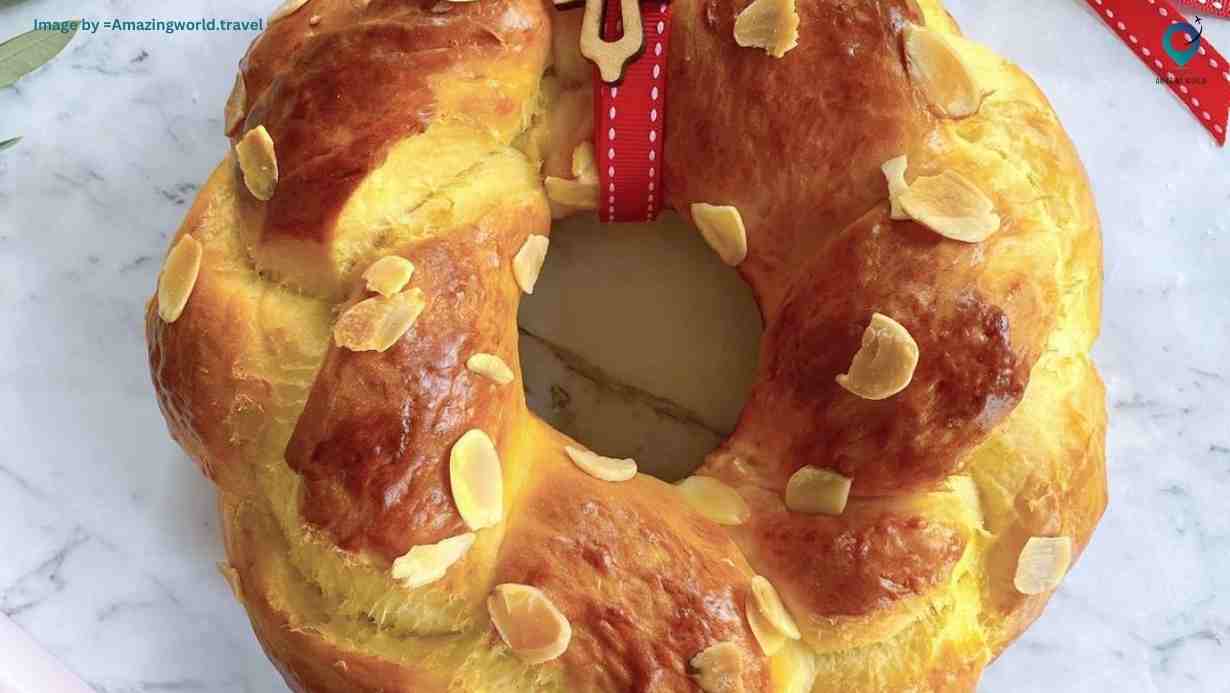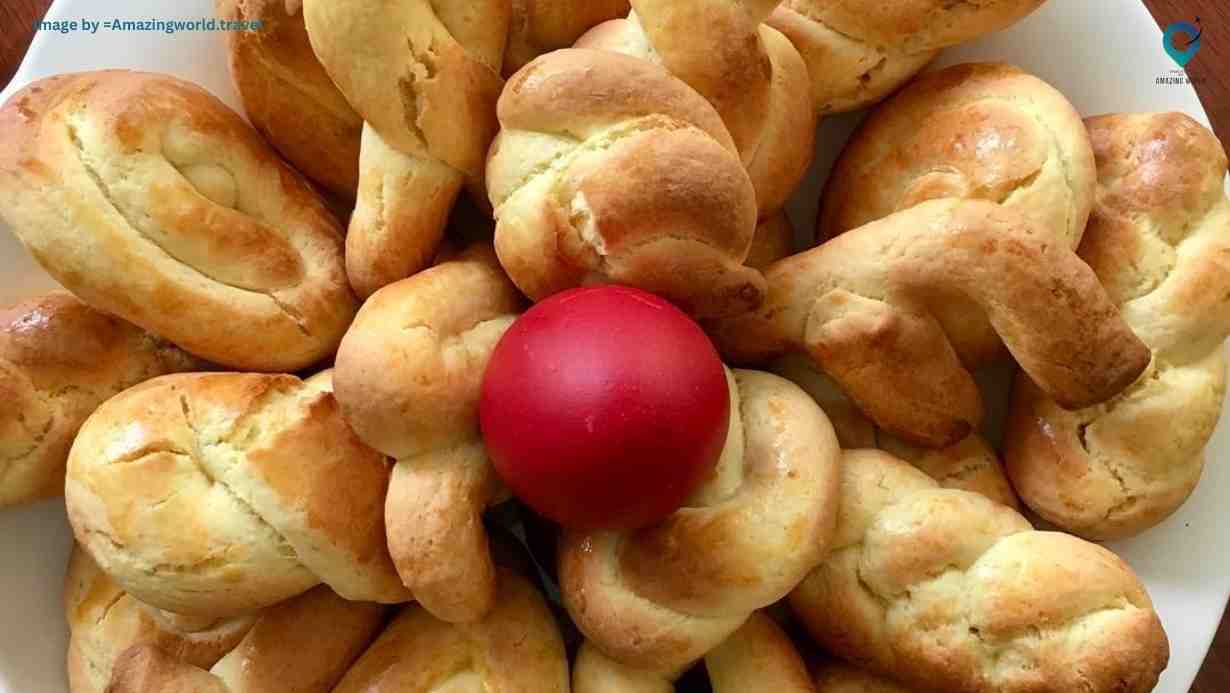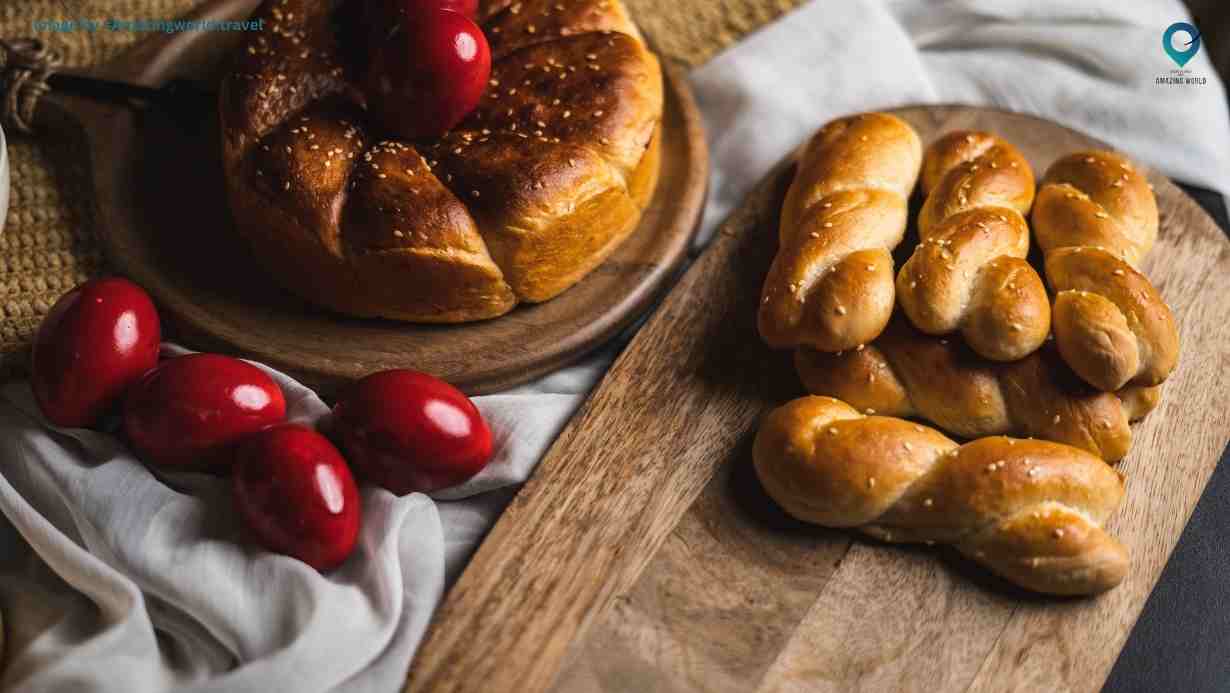Exploring Greek Orthodox Easter: Celebrations, Traditions, and Meaning
Are you curious about the vivid tapestry woven into Greek Orthodox Easter, encompassing vibrant celebrations, cherished traditions, and profound meanings? Delve into the essence of this time-honored festival, where the resonance of religious fervor intertwines with cultural richness, bringing forth a mosaic of customs and rituals.
Explore the depth of Greek Orthodox Easter as it unveils an array of unique observances, from the midnight Resurrection service echoing with the cry “Christos Anesti” to the symbolism behind red eggs cracked in celebration.
Join in this journey to uncover the significance and joyous spirit woven into the fabric of Greek Orthodox Easter – an amalgamation of ancient customs and enduring faith, fostering a sense of renewal and community.
“If you are looking for the best hotel and flight deals for your next vacation, then we recommend booking your bundled flight and hotel through hotwire.com.“
What Is Greek Orthodox Easter?
Greek Orthodox Easter, also known as Pascha, is the most significant religious celebration in the Greek Orthodox Church. It commemorates the resurrection of Jesus Christ from the dead, a pivotal event in Christianity that signifies the triumph of life over death and holds profound spiritual importance for Orthodox Christians worldwide.
This observance differs from Easter celebrations in other Christian denominations due to variations in the calendar, customs, and traditions. Greek Orthodox Easter follows the Julian calendar, resulting in a different date for its observance compared to Western Christian Easter, which adheres to the Gregorian calendar.
The celebration of Greek Orthodox Easter begins with a period of preparation called Lent, lasting for 40 days before Easter Sunday. This period involves fasting, prayer, repentance, and attending religious services, symbolizing the spiritual journey toward the Resurrection.
Holy Week, the week leading up to Easter Sunday, holds special significance. Orthodox Christians attend various services throughout this week, commemorating events such as Jesus Christ’s entry into Jerusalem, the Last Supper, crucifixion, and burial. The week culminates in the Resurrection service held on Saturday night, also known as the Midnight Resurrection Liturgy.
The Midnight Resurrection Liturgy is a focal point of Greek Orthodox Easter. At midnight on Holy Saturday, churches are illuminated, and the priest announces the joyful news of Christ’s Resurrection with the proclamation: “Christos Anesti!” (Christ is Risen!). This service symbolizes the triumph of light over darkness, with congregants holding candles and sharing the light as a representation of the Resurrection.
Throughout the celebration, traditional foods are an integral part of Greek Orthodox Easter, including margarita (a soup made from lamb offal), roasted lamb, red eggs, and sweet bread is known as tsoureki. These foods carry symbolic significance related to the Resurrection and renewal of life.
Where Is Greek Orthodox Easter Celebrated?
Greek Orthodox Easter, or Pascha, is celebrated not only in Greece but also in various countries and regions around the world with significant Greek Orthodox populations. Here’s a detailed exploration of the geographical regions and countries where Greek Orthodox Easter is observed:
Geographical Regions and Countries
Greek Orthodox Easter is primarily celebrated in:
- Greece: Within Greece, Greek Orthodox Easter is deeply rooted in the country’s cultural and religious fabric. The observance takes place across cities, towns, and villages, with each region contributing its unique customs and traditions to the celebrations.
- Cyprus: Similar to Greece, Cyprus observes Greek Orthodox Easter with fervor and traditional rituals, reflecting the religious heritage and practices of the Greek Orthodox Church.
- Eastern European Countries: Countries such as Bulgaria, Romania, Serbia, and Russia, among others, have significant Greek Orthodox Christian communities. These nations partake in the observance of Greek Orthodox Easter, incorporating their local customs and practices.
- Diaspora Communities Worldwide: Greek Orthodox communities exist worldwide, especially in countries with Greek immigrant populations. Places like the United States, Canada, Australia, and parts of Europe host vibrant Greek Orthodox Easter celebrations within these diaspora communities.
Significance of Specific Locations
Certain locations are renowned for their vibrant and culturally significant Greek Orthodox Easter celebrations:
- Jerusalem: The Holy City holds profound importance for Greek Orthodox Christians during Easter. The Church of the Holy Sepulchre is a focal point where Orthodox pilgrims gather to commemorate the Resurrection.
- Athens, Greece: The capital city of Greece hosts elaborate and diverse Easter celebrations, with various churches and neighborhoods contributing unique customs, religious processions, and cultural events.
- Mount Athos, Greece: This monastic region in Greece holds distinctive Easter observances, known for its spiritual significance and secluded monastic traditions.
- Cyprus Villages: Rural villages in Cyprus often preserve ancient traditions and customs during Greek Orthodox Easter, providing a glimpse into the authentic and intimate aspects of the celebration.
In these locations, Greek Orthodox Easter is not just a religious observance but a cultural event deeply embedded in local traditions, attracting visitors and pilgrims seeking to experience the rich heritage and spiritual essence of the festivities.
How Is Greek Orthodox Easter Celebrated?
Greek Orthodox Easter, a culmination of religious fervor and cultural richness, involves a multitude of rituals, observances, and traditional customs. Let’s delve deeper into the multifaceted celebrations:
Multi-destination Trip Quiz 1

Rituals and Observances
Detailing Religious Rituals, Services, and Liturgies During Holy Week:
Greek Orthodox Holy Week, known as “Megali Evdomada,” or Great Week, is a profound period leading up to Easter Sunday, encompassing:
- Palm Sunday: Commemorating Jesus Christ’s entry into Jerusalem, services include the blessing of palm leaves, symbolizing the crowds spreading palm branches before Jesus.
- Holy Thursday and Good Friday: Marked by solemn services depicting the Last Supper, Crucifixion, and Lamentations. The Epitaphios, a decorated bier representing Christ’s tomb, is carried in a procession on Good Friday.
- Holy Saturday: Churches remain dark until the midnight Resurrection service, signifying Christ’s descent into Hades and the anticipation of His resurrection.
Discussing Preparations, Fasting, and Devout Practices Leading Up to Easter Sunday:
- Lent (Great Lent): A 40-day period preceding Easter involves fasting, prayer, repentance, and attending church services, symbolizing self-discipline and spiritual preparation.
- Holy Week Observances: Intensified church attendance and devoutness mark this week, encouraging self-reflection and dedication to religious practices.
Traditional Customs and Celebrations
Describing Unique Customs and Celebrations:
- Midnight Resurrection Service: A climactic moment where congregants gather in darkened churches, awaiting the announcement of Christ’s resurrection. The proclamation of “Christos Anesti!” (Christ is Risen!) ignites candles, symbolizing the triumph of light over darkness.
- Fireworks and Symbolism: Vibrant fireworks at midnight signify the joyous proclamation of Christ’s resurrection, illuminating the night sky as a symbolic celebration of new life and hope.
- Traditional Foods: Special dishes like magiritsa, a lamb-based soup, and roasted lamb on Easter Sunday symbolize the end of Lenten fasting and the joy of the Resurrection.
Exploring Symbolism Behind Cultural Traditions
- Red Eggs: These eggs symbolize Christ’s blood and resurrection, with families engaging in the tradition of cracking them together to signify the breaking of Christ’s tomb.
- Tsoureki (Sweet Bread): Symbolizing the risen Christ, this braided sweet bread features a red-dyed egg, representing new life and rebirth.
Greek Orthodox Easter celebrations interweave spirituality, cultural customs, and symbolism, fostering a sense of community, renewal, and devotion among believers, making it a cherished and spiritually profound observance.
Regional Variances in Celebrations
Greek Orthodox Easter celebrations exhibit distinctive characteristics in both urban and rural settings, each offering a unique flavor to the observance:
Urban Celebrations
Exploring Unique Festivities in Major Cities like Athens:
- Athens: The capital city of Greece, Athens, showcases vibrant Easter celebrations. Notable aspects include:
- Church Services: Iconic churches like the Metropolitan Cathedral of Athens (Mitropoli), Agios Eleftherios Church, and Agia Irini Church hold elaborate services and processions.
- Cultural Activities: Various neighborhoods in Athens organize cultural events, folk dances, and music performances, adding a lively atmosphere to the city’s Easter celebrations.
- Midnight Resurrection: The midnight Resurrection service is particularly magnificent in Athens, with fireworks lighting up the sky and crowds gathering at significant locations like Lycabettus Hill for panoramic views.
- Thessaloniki: Greece’s second-largest city also boasts grand Easter observances, with churches such as Agios Dimitrios hosting significant services and processions. The city’s squares and streets come alive with traditional music and cultural displays.
Rural and Village Celebrations
Highlighting Traditional Observances in Smaller Towns and Villages:
- Traditional Practices: In rural areas and smaller communities, Greek Orthodox Easter retains a more traditional and intimate ambiance, focusing on:
- Local Churches: Villages have their own churches, often centuries-old, where devout locals gather for Easter services, maintaining age-old traditions.
- Family-Centric Celebrations: Families engage in customs like dyeing red eggs, baking traditional bread (tsoureki), and preparing lamb for the Easter feast.
- Community Bonding: Villagers share a strong sense of community during Easter, organizing communal meals, traditional music, and folk dances, fostering a close-knit atmosphere.
- Local Customs: Each region may have unique customs specific to its locality, often passed down through generations, providing an authentic and nostalgic experience during Greek Orthodox Easter.
Greek Orthodox Easter in urban centers like Athens showcases a blend of cultural extravagance and religious fervor, while rural celebrations in smaller towns and villages preserve intimate and traditional customs, underscoring the diverse and rich tapestry of Greek Easter observances across different settings.
Conclusion
Greek Orthodox Easter stands as a vibrant tapestry woven with rich traditions, spiritual depth, and cultural significance, encompassing a diverse array of celebrations across various landscapes and communities.
From the bustling urban hubs like Athens and Thessaloniki, where the resonance of ancient rituals blends with modern festivities, to the tranquil rural villages steeped in intimate customs and close-knit community gatherings, the observance of Greek Orthodox Easter reflects a profound sense of heritage and devotion.
The religious significance of Holy Week’s rituals, culminating in the midnight Resurrection service, embodies the essence of rebirth, hope, and the triumph of light over darkness. These rituals, deeply rooted in faith, signify a spiritual journey from contemplation to jubilation, encouraging self-reflection and devout observance.
Moreover, the customs, whether cracking red eggs symbolizing new life or savoring traditional delicacies like magiritsa and roasted lamb, are emblematic of renewal, family bonding, and cultural continuity.
How much did you like Our detailed A Complete Guide to the Greek Orthodox Easter Traditions? Review Also, please share these Blogs with your friends on social media.
Recommended
- Eno River State Park
- Tyger River Park
- Lake Welch Beach
- Little Elm Beach
- Cypress Bend Park
- Top 20 Festivals that Define Brazil
- Things To Do in Iguazu Falls
- The 22+ Most Instagram Travel Destinations
FAQs about Greek Orthodox Easter
What are the main traditions associated with Greek Orthodox Easter?
The main traditions include the midnight Resurrection service where "Christos Anesti" (Christ is Risen) is announced, symbolizing the Resurrection. Other customs involve cracking red eggs symbolizing new life, baking Tsoureki (sweet bread), consuming Magiritsa (lamb offal soup), and roasting lamb on Easter Sunday.
How do Greeks celebrate Easter differently from other cultures?
Greeks celebrate Easter with a profound religious focus, emphasizing church services, rituals, and traditions deeply rooted in Orthodoxy. Unique customs such as the midnight Resurrection service, red egg cracking, and specific traditional foods differentiate Greek Easter from other cultural celebrations.
What is the significance of the Holy Week in Greek Orthodox Easter?
Holy Week holds immense significance as it commemorates the events leading to Christ's crucifixion and resurrection. Each day of Holy Week signifies a specific aspect of Christ's Passion, observed through church services, prayers, and rituals in preparation for Easter Sunday.
What are some traditional Greek foods eaten during Easter?
Traditional Greek foods during Easter include Magiritsa (lamb offal soup), roasted lamb symbolizing Christ's sacrifice, Tsoureki (sweet bread) representing the risen Christ, and dyed red eggs symbolizing new life and the blood of Christ.
Greek Orthodox Easter traditions explained?
Greek Orthodox Easter traditions encompass religious observances, customs, and rituals like the midnight Resurrection service, red egg cracking symbolizing Christ's resurrection, baking Tsoureki, and consuming symbolic foods such as Magiritsa and roasted lamb.
Greek Orthodox Easter dates this year?
The dates for Greek Orthodox Easter vary yearly based on the Orthodox Church's calendar, which follows a different calculation from the Western Christian calendar. The specific dates for this year can be found by checking the Orthodox Church's calendar or through local church announcements.
Greek Orthodox Easter vs Catholic Easter differences?
Differences between Greek Orthodox Easter and Catholic Easter lie in their calculation methods, rituals, and some customs. Orthodox Easter follows the Julian calendar, while Catholic Easter adheres to the Gregorian calendar. Specific religious practices, church services, and the emphasis on certain traditions vary between the two.
Greek Easter customs and rituals?
Greek Easter customs and rituals include the midnight Resurrection service, cracking red eggs symbolizing new life, baking Tsoureki (sweet bread), consuming Magiritsa (lamb offal soup), roasting lamb on Easter Sunday, and attending specific church services throughout Holy Week.
Greek Orthodox Easter candle symbolism?
Candles used in Greek Orthodox Easter symbolize the light of Christ's Resurrection, signifying hope and new life. The candlelight during the midnight Resurrection service represents the spreading of Christ's light among the faithful, illuminating the darkness with the joyous news of His resurrection.

Meet David Hoper, a passionate travel Blog writer with 7+ years of experience in travel content. Through his exemplary storytelling and engaging narratives, he shares his experiences and brings destinations to life. With a keen eye for detail and a love for exploration, he has cultivated a diverse portfolio of travel blogs that inspire and inform readers worldwide.













